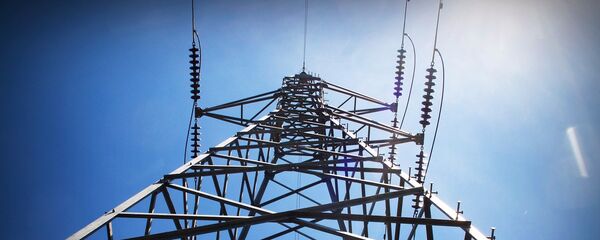The hypermodern $25 million ship is a joint project between the fertilizer company Yara and the maritime defense company Kongsberg Gruppen, which also excels at high-technology solutions to aerospace and offshore oil-and-gas companies. Even though the ship is three times as expensive as a regular cargo vessel of the same size, operating costs will be cut by 90 percent, as the electrically-powered ship need neither fuel nor crew.
"Clearly, it's time to be out first. We believe that this is the future. We think this can be of great importance, and some must be out first," Yara communications manager Kristin Nordal told the Norwegian daily Aftenposten, venturing that the Norwegian project was head and shoulders above its peers. Nordal also said Yara wanted to cut emissions and make its production as environmentally friendly as possible.
Dubbed the "Tesla of the Seas" by shipping executives, the ship is expected to proceed from being manned at first from an on-board control center to becoming completely unmanned, being navigated autonomously using GPS. Possible collisions will be avoided using a combination of sensors.
At present, these containers are being transported over land, which, according to Yara CEO Svein Tore Holsether, takes over 100 diesel truck journeys per day. Switching to autonomous battery-driven container vessels will move the transport from road to sea, while also successfully reducing noise and dust, improve road safety and curb the emissions of nitrous oxide and carbon dioxide, as the Yara Birkeland alone will lead to an annual emission cut of 700 metric tons of CO2.
According to Yara head of production Petter Østbø, the Yara Birkeland is just the start. In the future, the Norwegian company intends to invest in larger autonomous ships. As soon as international regulations for crewless sea voyages emerge, Yara plans to establish longer routes including trans-oceanic trips.
Apart from the Yara Birkeland, Norway is betting on unmanned vessels and is investing significantly in autonomous ships. The very same Kongsberg is involved in a number of projects that include a prototype autonomous utility ship and an unmanned oil rig support ship, together with Automated Ships Ltd (ASL) and the offshore oil rig company Bourbon Offshore.
“Yara Birkeland” will be the first fully #electric & #autonomous container #ship w/ #zeroemissions #innovation https://t.co/CyKd8nxyg7 pic.twitter.com/NOsSkVijIo
— WBCSD (@wbcsd) May 10, 2017
However, the Norwegians are not the only ones who are investigating the market possibilities for self-propelled ships. The British company Rolls-Royce Holding PLC plans to launch robotic ships by 2020, starting with tugboats and ferries and later switching to larger cargo ships sailing through international waters.
At present, however, long-range merchant shipping remains uncharted waters. So far, limited communications and a lack of artificial intelligence algorithms remain the largest obstacles. Therefore, it may take several decades before seamen will lose their jobs to robots.




